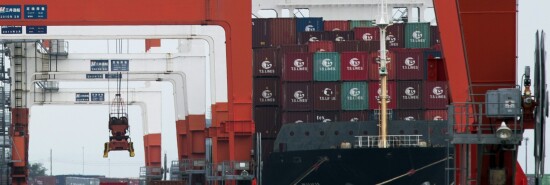
US needs to join the Pacific trade deal
Dan Hannan
Video Embed
In 1789, sailors on HMS Bounty, which had been sent to carry breadfruit from Tahiti to the West Indies, grew tired of naval discipline. They mutinied against their commanding officer, Lt. William Bligh, set him adrift on the ship’s launch, and disappeared into the depths of the Pacific. Nine of them, accompanied by 16 Tahitians, eventually found the uninhabited island of Pitcairn and set fire to the Bounty. Their descendants have lived on that rocky mound ever since.
It would be a stretch to say that they have flourished. The last child to be born there was Ryan Christian, a great-great-great-great-great-great-great-grandson of the chief mutineer, Fletcher Christian. That was in 2005. Ryan and his sister are the only Pitcairn Islanders to have been born since 1987. The population is now down to 47.
CALIFORNIA’S OLIVE TRADE CASE SHOWS THE RIGHT WAY TO DEFEND AMERICAN AGRICULTURE
But the Pitcairn Islands have just played a critical geopolitical role. World Trade Organization rules do not permit trade agreements unless they are regional, and British sovereignty over Pitcairn has allowed the United Kingdom to join the Comprehensive and Progressive Agreement for Trans-Pacific Partnership.
Britain has become the 12th member, joining Australia, Singapore, Canada, Japan, and Chile, among others. In consequence, CPTPP has overtaken the European Union as the world’s biggest trade pact, with a collective GDP of $14 trillion — 15% of the global economy. Unlike the EU, CPTPP is a commercial organization. It does not have a president or a parliament, a passport or a driving license, a national anthem or a flag. It works on the basis of mutual recognition rather than harmonization.
Unsurprisingly, other countries are interested in joining. Costa Rica, Ecuador, Taiwan, and Uruguay have filed applications, and Thailand, Colombia, Indonesia, South Korea, and the Philippines are mulling membership. But, oddly, not the United States.
“Oddly” really is the word. The CPTPP was, to a large degree, an American initiative, designed both to monetize proximity to the world’s fastest-growing region and to contain Chinese ambitions in the Pacific.
It was former President George W. Bush who began talks on a Pacific trade nexus in 2008. Former President Barack Obama was more than happy to continue that work. His secretary of state, Hillary Clinton, framed it as the centerpiece of America’s “Pacific Pivot.”
But by the time she stood as a presidential candidate, Hillary had turned against the deal, matching Donald Trump with her protectionist rhetoric. Protectionism has always been superficially popular. Standing up for domestic producers sounds like common sense — though, in reality, it invariably serves to make poorer the country that adopts it.
As Ronald Reagan put it, “Instead of protectionism, we should call it destructionism. It destroys jobs, weakens our industries, harms exports, costs billions of dollars to consumers, and damages our overall economy.”
In Britain, only the Europhile nostalgics are complaining. Tariff-free access to the world’s largest market is an obvious gain. Vietnam, a CPTPP member, is forecast to grow faster than any other country on Earth between now and 2050. Who wouldn’t want a piece of the action?
If that logic holds true for Britain, most of whose people, not counting the 47 Pitcairners, obviously, live 8,000 miles away, how much more true is it of the U.S.?
“The Pacific Ocean, its shores, its islands, and the vast regions beyond, will become the chief theater of events in the world’s great hereafter,” said William H. Seward, then a Whig senator for New York, in 1852. He was right. The population and the GDP of the U.S. have shifted steadily since then from the East Coast to the West.
By 2050, all the world’s largest economies will be in the Indo-Pacific region — in order, China, India, the U.S., and Indonesia. The question is whether that economic shift will be accompanied by a political one. Will the U.S. be setting the rules — even if, unlike the EU’s, these are light-touch rules that tend not to go behind borders? Or will it pursue the doomed doctrine of self-sufficiency, Juche, as promoted through the disastrous Inflation Reduction Act?
CLICK HERE TO READ MORE FROM THE WASHINGTON EXAMINER
World leadership can be expensive. When the national debt stands at over $30 trillion, there are limits to what the U.S. can do. But whereas maintaining garrisons in Europe or the Middle East is a drain on resources, joining CPTPP would serve to make Americans richer. It is one of the few ways in which the U.S. can reassert its power and become better off for its pains.
Free trade, support for democratic allies, and greater wealth. Come on in, cousins. The water’s lovely.
